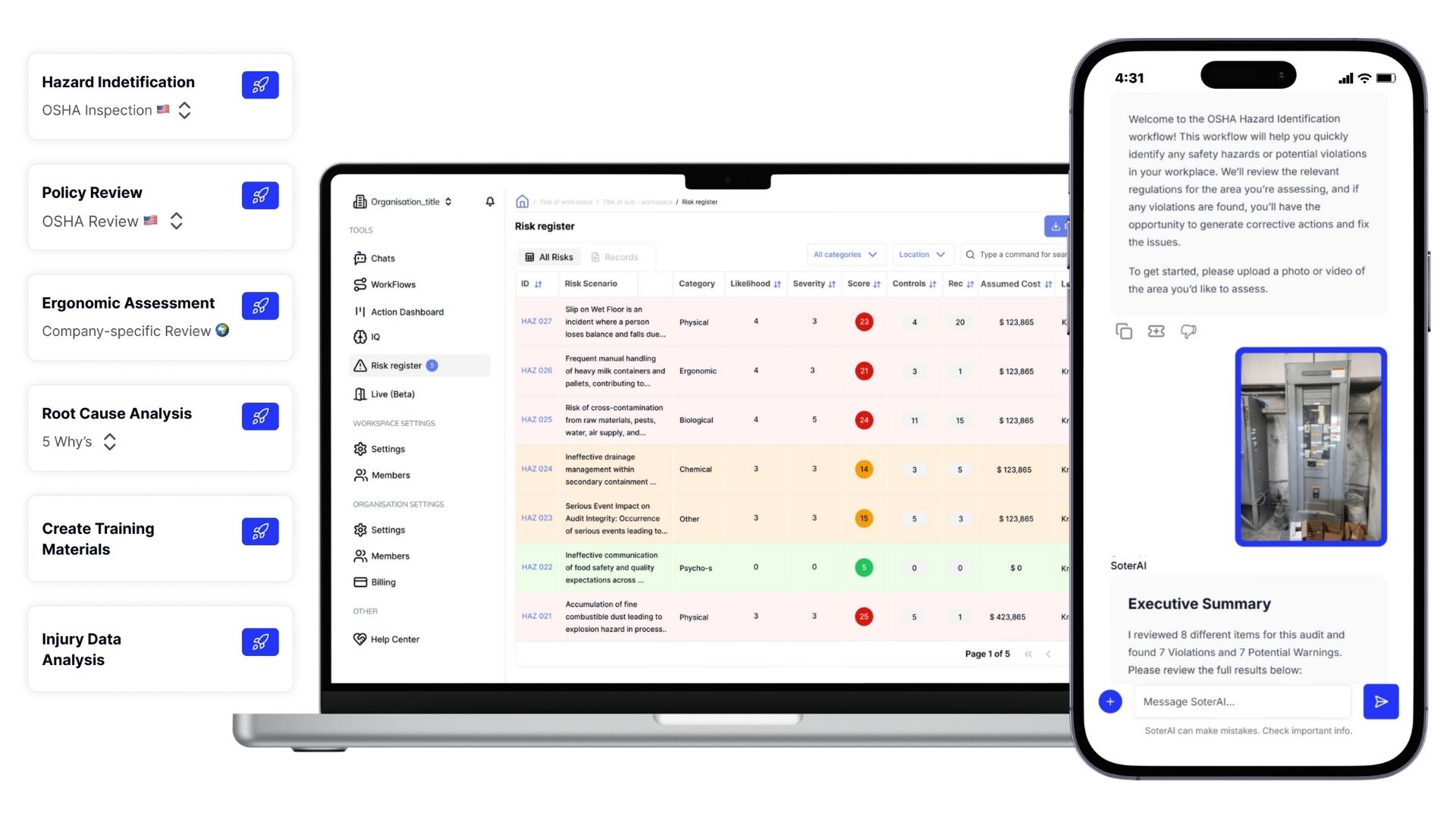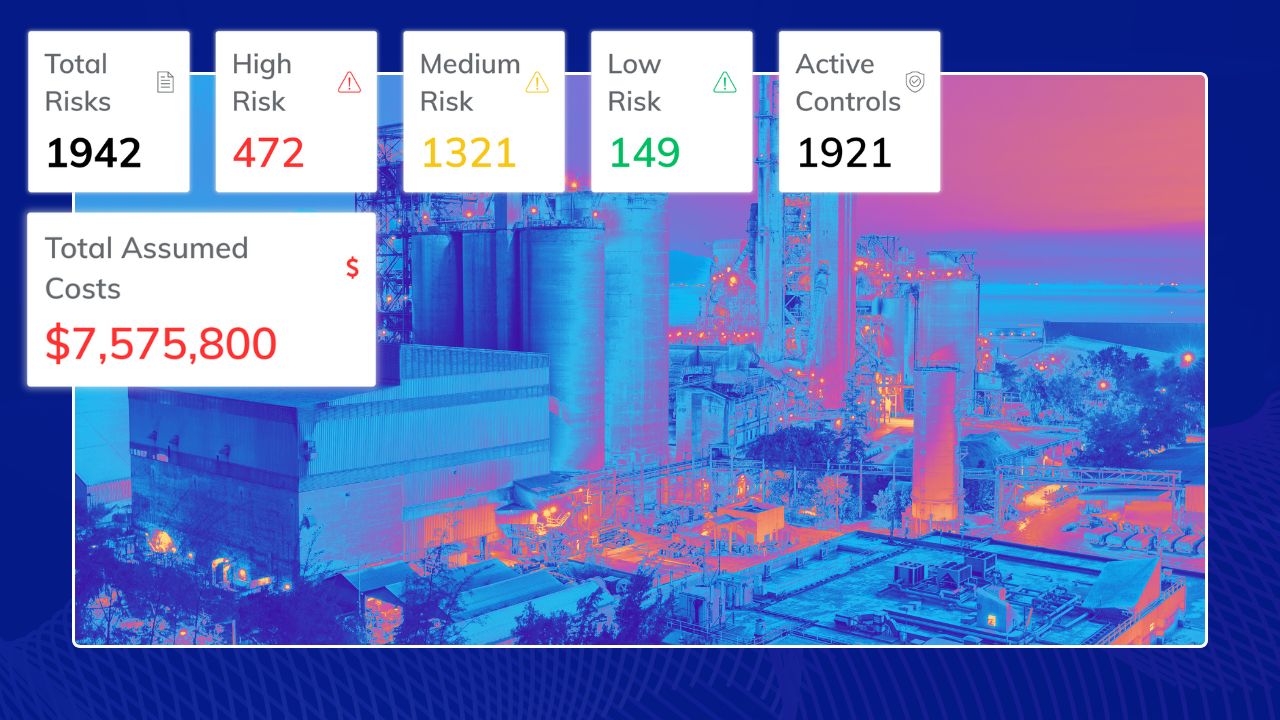In late 2022, I flew from Europe to Australia for a critical meeting with a major supermarket chain. They were rolling out our previous wearable technology, designed to reduce musculoskeletal injuries, and employees were already seeing benefits—going home without their usual pain.
But this article isn’t about that technology.
It’s about why that rollout, and countless other safety initiatives, kept stalling. On the morning of the meeting, I got an email: the session was rescheduled due to another on-site incident.
Frustrating? Absolutely. Surprising? Not really. For three years with this client, I saw the same pattern repeat: incidents stole attention, urgency faded, and meaningful progress was lost in constant firefighting.
Having spent more than six years in the health and safety space, I’ve observed this reactive pattern repeatedly. Incidents must absolutely be investigated and addressed with new controls. But if you only respond after something happens, you’ll always be chasing your tail. The incidents never stop.
Historical incident data is helpful for spotting gaps in your safety approach. But ongoing hazard identification and continuous risk monitoring are far more effective. Proactively capturing hazards and risks as they emerge lets you intervene before incidents occur. Reacting only after incidents leaves you in an endless cycle. Sure, learn from past events – but to build an effective safety strategy, you need to predict and prevent incidents, not just react to them.
The real challenge? Building a meaningful risk profile so your team can clearly see where controls are missing or ineffective. Traditionally, this has been incredibly time-consuming and I’d even argue it’s mathematically impossible to do effectively by hand. Data arrives from so many directions: incident reports, CCTV footage, machine logs, hazards reported by workers, and much more. These sources hold valuable insights but are massively underutilized due to their unstructured nature.
Technology is changing this. CCTV footage can now be analyzed to identify hazards. Machine logs track shutdowns and malfunctions, while safety platforms simplify reporting incidents and hazards, creating structured data streams. But this introduces a new challenge: data overload. What does all this structured data mean? How does a speeding forklift spotted on CCTV relate to a guarding hazard reported by a worker?To answer these questions, we built SoterAI – an intelligent safety analytics platform designed specifically to transform complex, unstructured safety data into clear, actionable insights.
So, how does it work?
First, it’s an AI-first platform. It’s not just a buzzword, it’s the key to solving the industry’s hardest problem: processing all the messy, siloed data and organizing it into a coherent understanding of your risk profile. There’s simply no way a human, or even traditional data analytics tools, can process it all effectively. The data volume, variety, and unstructured nature demand AI.

Organizations using SoterAI connect multiple data sources: APIs from safety systems, control documentation like policies and training materials, HR platforms, and soon, CCTV, equipment logs, and more. Every system that collects relevant data becomes part of the picture.
We use AI agents – think of them as virtual teammates that replicate human tasks through AI. These agents process incoming data, detecting events like incidents, hazards, remediation actions, and controls that may or may not be effective.
Another of our AI agents takes these events, sometimes over a million per year for a single client, and builds a live risk register. It connects event types into risk scenarios, creating a dynamic map of your organizational risk. This is the most complex and exciting thing we’ve ever built. It processes enormous amounts of data and gives organizations a level of risk understanding that’s never been possible before.
And this matters. Because now you can act before something happens.
First, our system uncovers why hazards and incidents are occurring – what controls are missing or not working, and immediately communicates these gaps. Filling them means you’re predicting and preventing the next incident. That’s instant ROI.Second, we enable your teams to act through workflows. Whether it’s reviewing a policy, analyzing an image for hazards, creating training materials, or investigating incidents, you can do it all inside SoterAI’s chat-based workflows. And unlike generic AI tools like ChatGPT, SoterAI knows your business: your risk profile, your documents, your history.
In doing so, SoterAI is making safety and risk teams 10x more efficient. It does the heavy data lifting that no human team can match, and gives your people the tools and insights to act fast and with confidence. Now you can quickly adapt control strategies, update documentation, and get to the root causes faster. It’s a powerful example of AI delivering real, immediate value.
Six months later from this missed meeting, the supermarket chain from the beginning of this story experienced a tragic fatality. A machine malfunctioned, crushing a warehouse worker. The investigation showed the machine had been reported multiple times. But the risk assessment hadn’t been updated. The data was there but the understanding was not. The company reportedly banned the machine – only after the fatality.
Reacting all the time is destined to fail. And tragically six months later, another of their workers, this time a cleaner, was killed by a different piece of machinery. I’m sure the company responded again, paused initiatives, and focused on this latest issue. But that approach is broken. The data was there all along, it just wasn’t understood.
Your organization is already capturing the data to move into a truly proactive space. SoterAI, and our AI-first approach, is your way to process that data, predict your next injury, and guide you to prevent it.Want to see the game-changing capability that makes proactive safety achievable? Building on the concepts discussed here, our upcoming webinar reveals how SoterAI’s intelligent Risk Register transforms complex data into preventative action. Register for “Why Your Safety Program Isn’t Proactive (Yet): Introducing the Game-Changing Risk Register“ on May 15th, 11 AM EST, and learn how to equip your EHS program with true predictive power. Reserve your spot HERE.


